
The Email Marketing Strategy Every Business Should Steal
Even with all of the marketing channels available nowadays, email marketing is still the one generating the highest ROI for marketers, converting 40 times as many customers as social media. That's why email marketing is the front runner when it comes to marketing your products and services to your audience, and why it's so important to have a solid email marketing strategy.
Email Marketing Strategy Contents
How To USE The Tools In Your Email Marketing
Welcome Emails: The ‘Getting To Know You’ Sequence
Emails That Sell: The ‘Get Them To Buy' Sequence
Email Marketing Best Practices: Broadcast Emails
Re-Engagement Emails: The Revival Sequence
Improving Email Deliverability
How To USE The Tools In Your Email Marketing
No matter your niche, email marketing should be a key marketing channel for your business and with everyone else upping their marketing game, it's not enough to just have the right email marketing tools, you have to know how to use them effectively.
You've got a list of email subscribers and that list is growing steadily, you're sending them broadcasts and email campaigns, so you're on the right track! But sooner or later things are going to get messy if you haven't got your email marketing strategy process in place. Before you know it your subscribers will start receiving confusing, conflicting, and sometimes even duplicate messages.
To get the most out of your email marketing strategy you'll want to send every subscriber through a series of email sequences depending on their tags, the list they're on, and their interests.
This way each person goes through a ‘personalised' journey with you, learning more about you and your business, building trust and goodwill, resulting in them engaging more with your emails and ultimately buying more of your products and services.
Welcome Emails: The ‘Getting To Know You’ Sequence
First impressions are everything, and that's why it's so important to get your welcome emails right. This is the point that your subscribers are going to decide whether or not they want to keep engaging with you and if they should stay on your list.
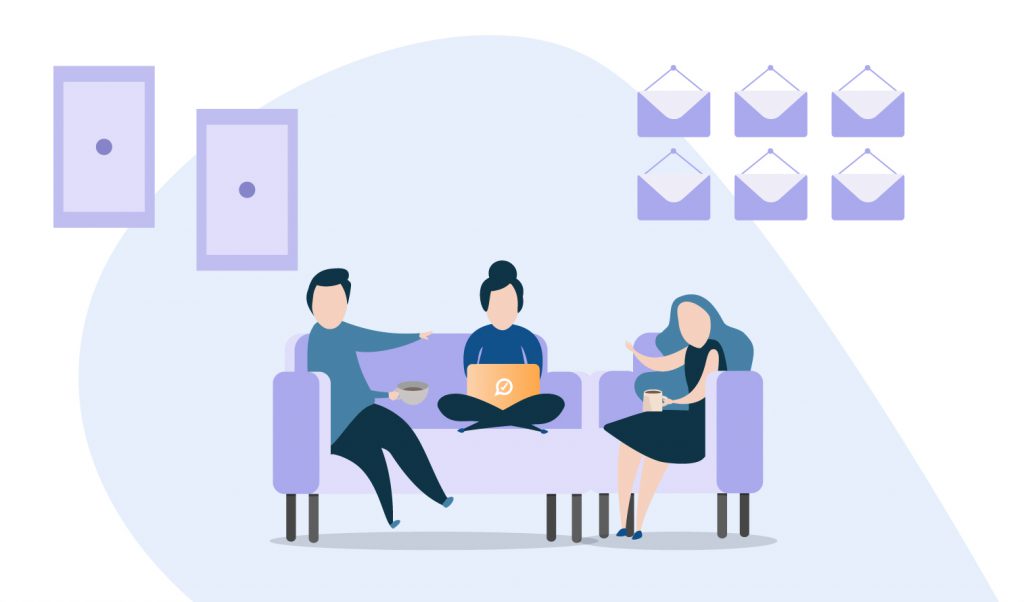
Every single person who joins your list should go through the GTKY (Getting To Know You) welcome email sequence. It's the perfect opportunity for your subscribers to get to know more about you, but most importantly, for you to get to know more about your subscriber's wants and needs and build that all-important goodwill.
The GTKY sequence is a series of welcome emails with a difference. Instead of the usual pitch emails, this is a series of six emails designed to build a relationship by letting them know how you got started, why you got started, what you can do for them, and what they can expect from you.
Email One
This is the email that your new subscriber is absolutely expecting to receive when they join your list. It might be the download that they opted in for, a purchase confirmation, or their membership login details.
Wait 2 hours…
Email Two
This is your chance to give them a bit of background and social proof around who you are and what you do. Pop some personality in to remind them who you are and grab their attention – you don't want to be just another email in the inbox!
Wait 13 hours…
Email Three
We're going a little bit ‘off-sequence' with this one as the purpose of this email is to prompt a reply. Keep it short and sweet and make sure you ask a question they'll want to reply to, like ‘what's your biggest struggle right now?'. Once they've replied you're less likely to hit their spam folder going forward, winner!
Wait 11 hours…
Email Four
Got a funny story to tell? Well. now's the time to tell it! In email four you want to communicate your business core values and beliefs and wrap it all up in a story-like email to help it resonate with your subscribers.
Wait 1 day…
Email Five
Here is where you can focus on a common misconception or struggle in your niche and refer back to your core beliefs from email three. Now you can offer them a solution to the common problem they might be facing or go into detail about how you're products and services can help.
Wait 1 day…
Email Six
We call this one ‘The Stack' because this is where you get the chance to really show off and stack the benefits of your product/service. We would also recommend that you link out to some valuable content you have and maybe even a gentle pitch.
It's important to remember not to send out any broadcasts to people while they're going through the GTKY sequence so that you don't overwhelm them or annoy them with too many emails. You can exclude people from your broadcasts using tags or lists, depending on which email marketing service you're using.
Emails That Sell: The ‘Elevation' Sequence
We're all selling something, right? As much as delivering free value and content in your emails is an awesome way to keep people engaged and positions you as the expert in your field, your emails should make sales.
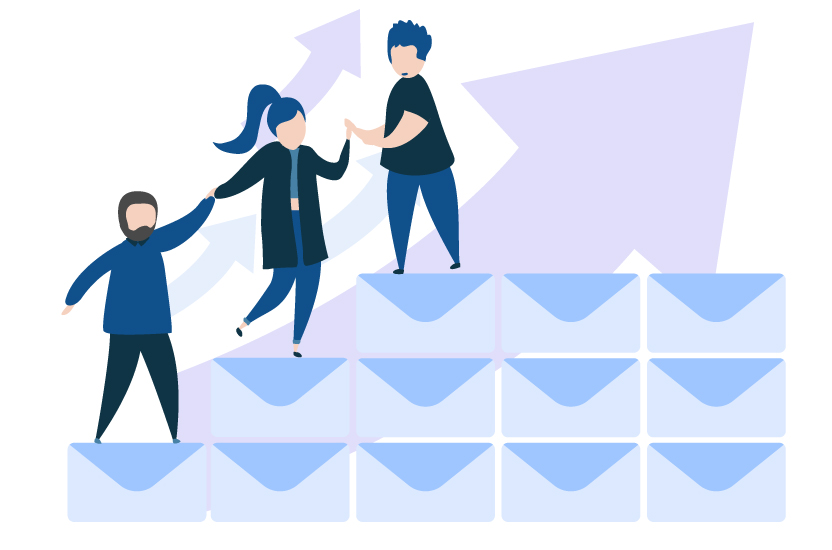
The whole point of this email sequence is to get new subscribers to make their first purchase from you and to get existing customers to buy more stuff.
To elevate them.
Get Personal, Really Personal
One of the best ways to make sales with email is to make your emails super focused on your subscriber's interests, needs, and current challenges. If you included a survey in your welcome sequence then you can use the results of that survey to segment your audience and even fuel your email content.
If you've already got a pretty good idea what these might be then you're off to a running start, but it's best if you can segment your list based on their individual needs. This way you can send different messaging to each segment of your list so that they receive emails that speak directly to them, increasing conversions and sales.
Stand Out In That Inbox
Compelling subject lines are key at this stage in your email marketing strategy. The novelty of being added to your list has most likely worn off, so you need to get creative if you want your subscribers to keep opening your emails. After all, if they aren't opening your emails, your chances of selling to them are pretty slim!
Here are some email marketing subject line stats to keep in mind:


- Emails sent with personalised subject lines get a 26% boost in open rates. – Campaign Monitor
- 47% of email recipients will open your email based solely on the subject line. – OptinMonster
- People are less likely to open emails that include a question mark or hashtag. – SuperOffice
- Subject lines with an emoji increased open rated by 56% compared to text-only subject lines. – Campaign Monitor
- 82% of marketers send emails with no more than 60 characters in the subject line. – Convince & Convert
- Only the first 30 characters of a subject line are visible on the iPhone email app. – Yola
High-Value Content Only Please
Now that you've got people excited enough to open your email with your killer subject line, you can't disappoint with the content. Obviously promotional and pitchy emails are a total turn off for subscribers, but there are plenty of ways you can deliver value and promote your products and services in a more organic way.
- Personal stories and life lessons you can relate to your business message and values.
- Company and industry updates, position yourself as the expert and go-to resource for that information.
- Birthday and celebration emails, send a fun email promoting your products as a celebratory treat!
- Blog posts or podcast episodes, simply re-purpose your existing or new content in an email.
- Customer stories and testimonials, there's nothing quite like a bit of social proof.
More Is Always Better
You might think that sending too many emails will annoy people and push them to mark you as spam, or worse, unsubscribe. And you'd be right to think that – if you're sending low-value email content.
It typically takes someone receiving up to twelve emails before they buy from you. That means that you should be sending at least 10-12 high-value emails in this sequence to optimise your chances of selling the right stuff to the right people on your list.
You might think that this is overkill, but there are plenty of examples of businesses increasing the volume of emails sent and generating tons more revenue from their email marketing strategy.
*Once people have been through this sequence you should automatically apply a tag to push them into your general broadcast list.*
Email Marketing Best Practices: Broadcast Emails
Once people have been through your welcome sequence and buying sequence, they'll start receiving your broadcast emails. They're now part of your general email list but that doesn't mean that you can take your eye off the ball. Broadcast emails are an essential part of your email marketing strategy, so you need to make sure you're optimising them for your audience and your goals.
The Best Time To Send Email
The bad news is that the nitty-gritty of when it's best to send your emails really depends on your specific audience. The good news is that a recent study by GetResponse offers some pretty compelling data to help you make some decisions.
Day of The Week – Week days tend to take the lead for the best email open and click rates, with a definite decrease on Saturday and Sunday. Generally, people are more focused on reading and engaging with email through the week and try to trade-in work for fun on a weekend. This does also mean that you may want to avoid sending emails on a Monday when people are wading through a mass of emails in their inbox!
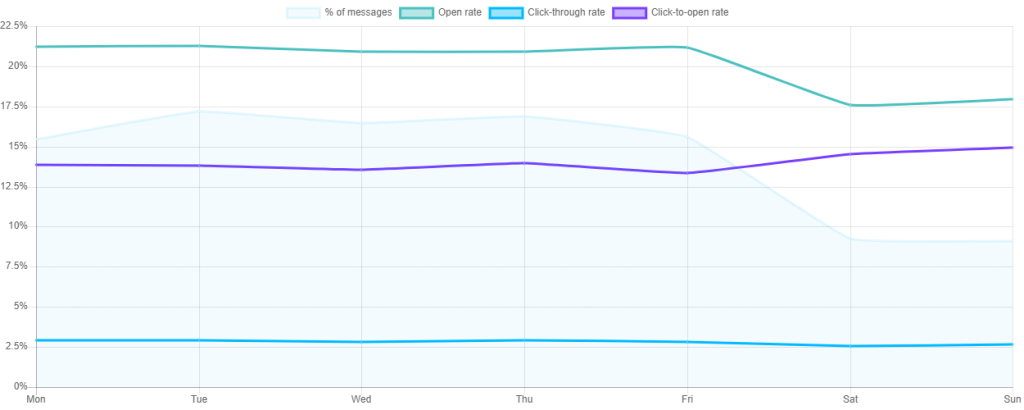
Time of Day – In terms of open rates it looks like there are 3 times of day that this increases, 6am (when people are waking up), 1pm (lunchtime email checks), and 5pm (when most people are finishing work).
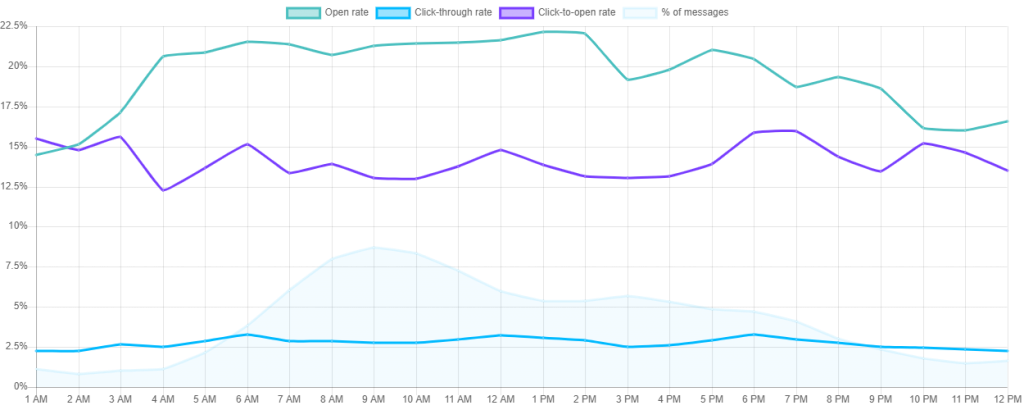
All that said, it isn't enough to simply start sending emails Tuesday to Friday at lunchtime and hope that will get you the best open and click rates. This is a good starting point, but to get the best results (which is what we all want, right?) we would recommend that you test different days and times and record the results. This way you'll be able to reach your audience with all your awesome emails, at the right time, every time!
Conditional Content
If you really want to level-up your email marketing strategy then conditional content is your friend.
Conditional content allows you to insert dynamic content into your email campaigns, and it's a total game-changer. You can decide whether or not to display certain content blocks in an email to a subscriber based on the tags they have, driving clicks (and conversions).
Your subscribers will get a warm fuzzy feeling when they receive an email with personalised content, based on their location, their interests, or even their personal challenges.
Most of the leading email marketing platforms have the ability to use conditional content including MailChimp, ActiveCampaign, and ConvertKit.
Re-Engagement Emails: The Revival Sequence
In an ideal world, your subscribers will be eagerly awaiting your emails popping into their inbox and engaging with every single word and clicking every link. But the reality is that a lot of people will start disengaging with your emails and therefore start missing out on all the awesome content you're pushing their way. That's where the Revival Sequence comes in!
The one and only focus of this sequence is to get people to engage.
Stage One – Opens
The first stage of this sequence is to get people opening up your emails again. This doesn't just mean attention-grabbing subject lines, it means getting back on their radar and reminding them who you are and why they should engage with you.
In order to do this, you need to ‘become 3D'. Create a multi-channel approach, target them with ads, engage in Facebook communities that they may be part of, tag them in social media posts, mention them in your Tweets. You need to make them feel valued, part of your world, and show them what they're missing.
At the same time, you'll be sending them through a sequence of ten emails with one objective – getting them to open an email. As soon as they open an email you can apply a tag that moves them straight into stage two of the Revival Sequence.
Stage Two – Clicks
Now that you've got your subscriber opening your emails again the next hurdle is to get them to start clicking.
Set up a sequence of ten emails designed to encourage click-throughs, using high-value content targeted to the specific interests and challenges for that subscriber. This is where proper segmentation is super useful, you have a much higher chance of increasing click-through rate if you can send personalised content to different segments of your disengaged list.
As soon as a subscriber is re-engaged you can push them back into your broadcasts and you can tick them off the disengaged list – woohoo!
Improving Email Deliverability
Email deliverability isn't exactly a sexy topic, but neither is spending a ton of time on your email campaigns just to realise they aren't being delivered. It goes without saying that you can have your email strategy nailed down, but if your emails aren't actually landing in inboxes, you've got a pretty big problem.
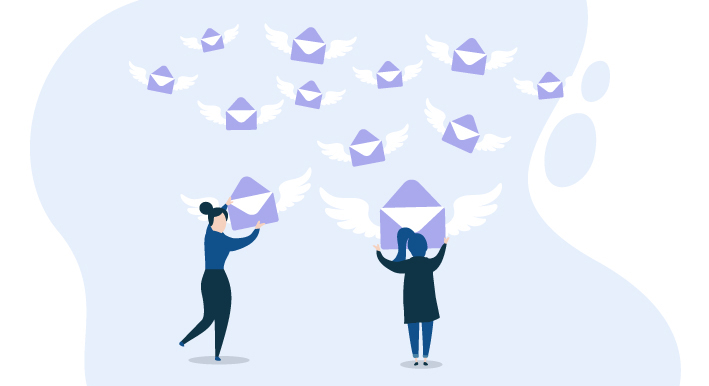
Here are some key rules to go by to give you the best chance:
Double Opt-In For The Win
Double opt-in serves two purposes that will help with your deliverability. The first is that it qualifies people joining your list, they've shown genuine interest and gone the extra mile to start receiving your emails. This means you'll likely have a higher open rate and a better sender reputation – high five to you! It also means that you'll get less of those nasty spam complaints, which can only be a good thing.
Brand Yourself
By using your brand name in your ‘from' line, you'll not only avoid spam complaints, but it's also been proven to improve open rates. You could choose to go with your brand name alone, but this could sometimes look a bit salesy, so maybe just save that for your sales emails. The best way we've found is to use your own name or the name of someone on your team followed by your brand name, this way your subscribers will feel like they're receiving emails from a real person.

Keep That List Squeaky Clean
It might feel like you a bit of an email celebrity when you have a huge amount of subscribers on your list, but the longer you let those inactive users hang around, the more you risk damaging your deliverability rates.
It's important to regularly cleanse your list and remove any inactive or unengaged subscribers. If you've put them through the Revival Sequence and they still aren't giving you the time of day, then it's time to say goodbye.
Validate Email Addresses – No Posers Here
Email validation might seem like a tricky and time-consuming task but it does absolute wonders for delivery rates, increasing sender reputation and conversion rates.
You can use a tool like Truemail to validate email addresses using regex validation, MX validation, and SMTP validation – pretty clever!
Email Marketing Strategy Conclusion
The more you know about your subscribers the easier it's going to be to deliver top-notch email content that keeps people engaged and encourages them to buy. In each stage of your email marketing strategy, you should strive to get to know your subscribers in a way that allows you to put them through a segmented, targeted email journey.
In order for your email marketing to be effective and help you achieve your goals, your email marketing strategy should be a water-tight, automated, personalised sales machine.
If you think about each point of this post as a cog in that machine, it's now up to you to tighten the screws and switch it on!
2 thoughts on “The Email Marketing Strategy Every Business Should Steal”
Leave a Reply
You must be logged in to post a comment.



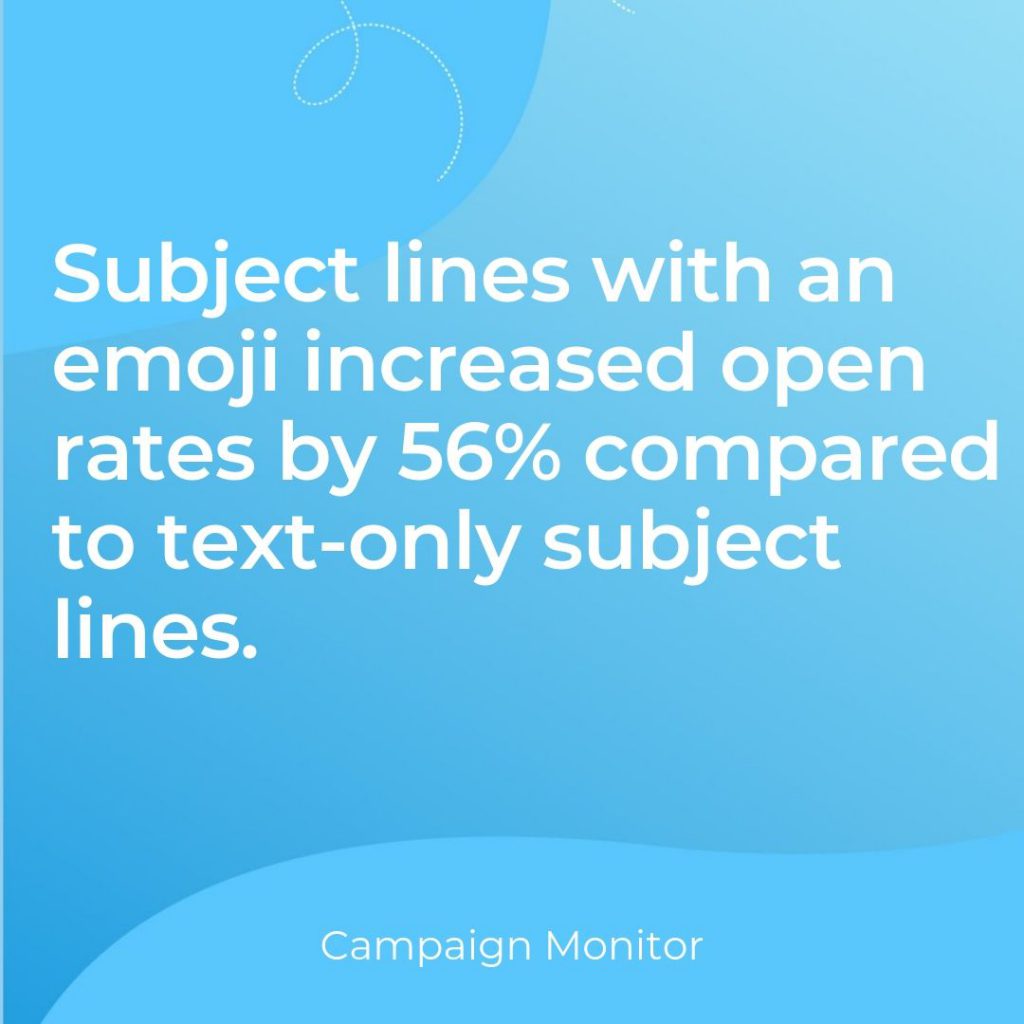

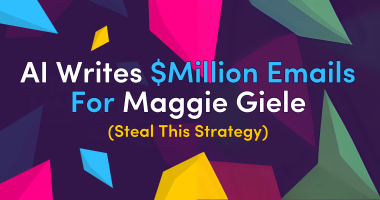
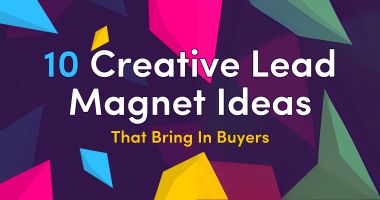

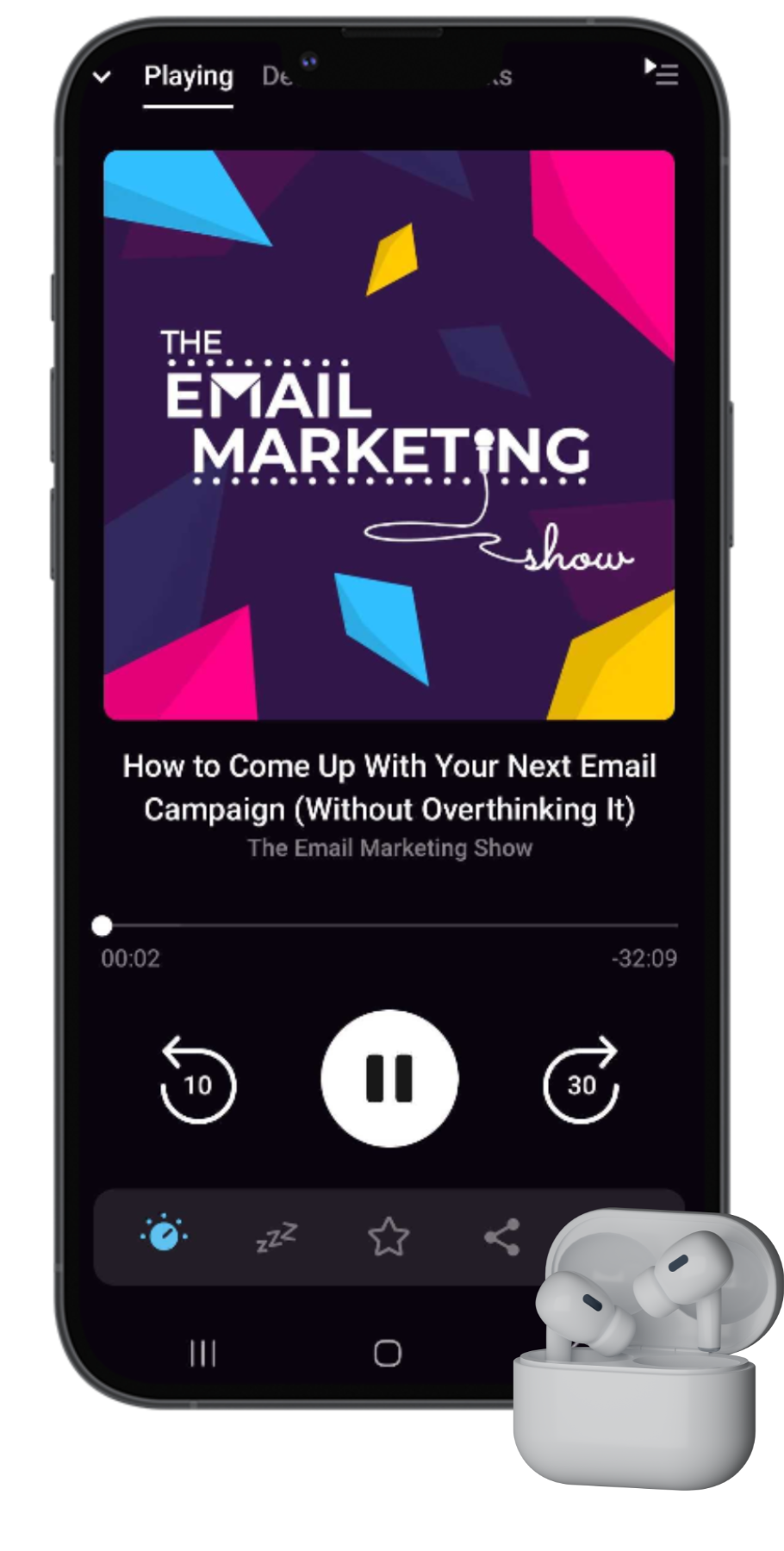
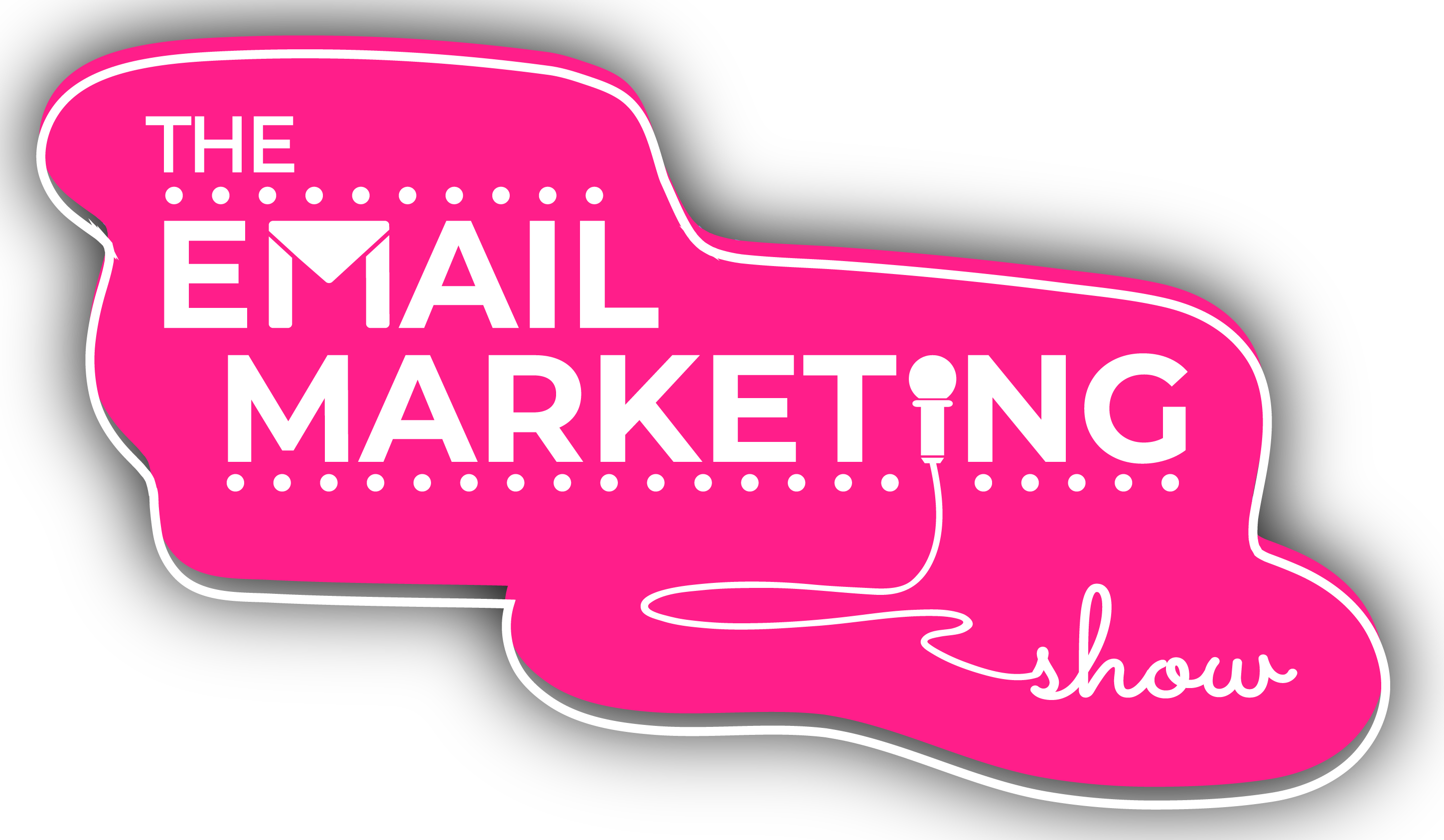
I love this post very educational. I am trying to build my email list myself. Looking forward to implementing these strategies.
I’m so glad you enjoyed it. Good luck building your list and hopefully some of these tips will help get you started 🙂